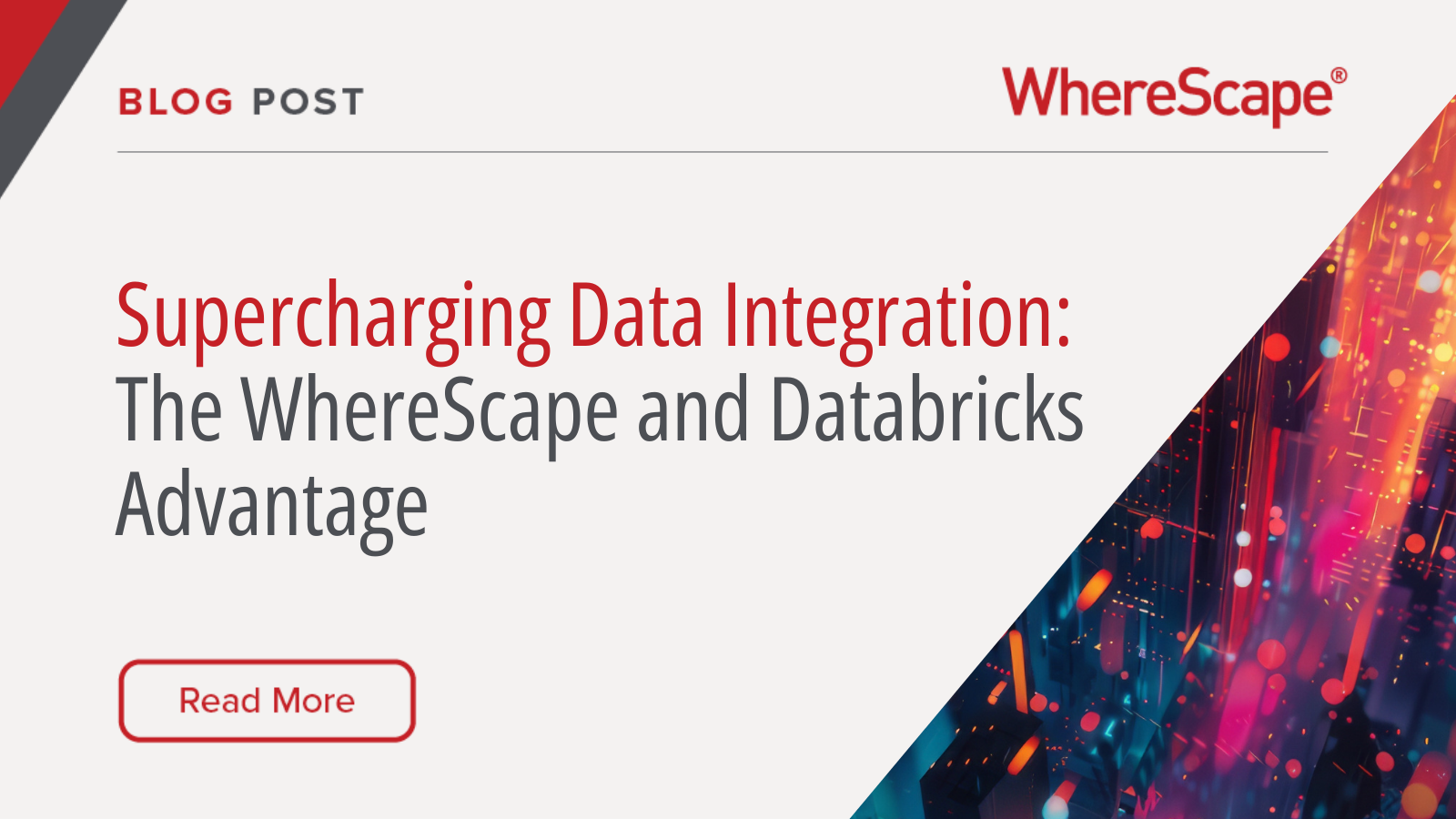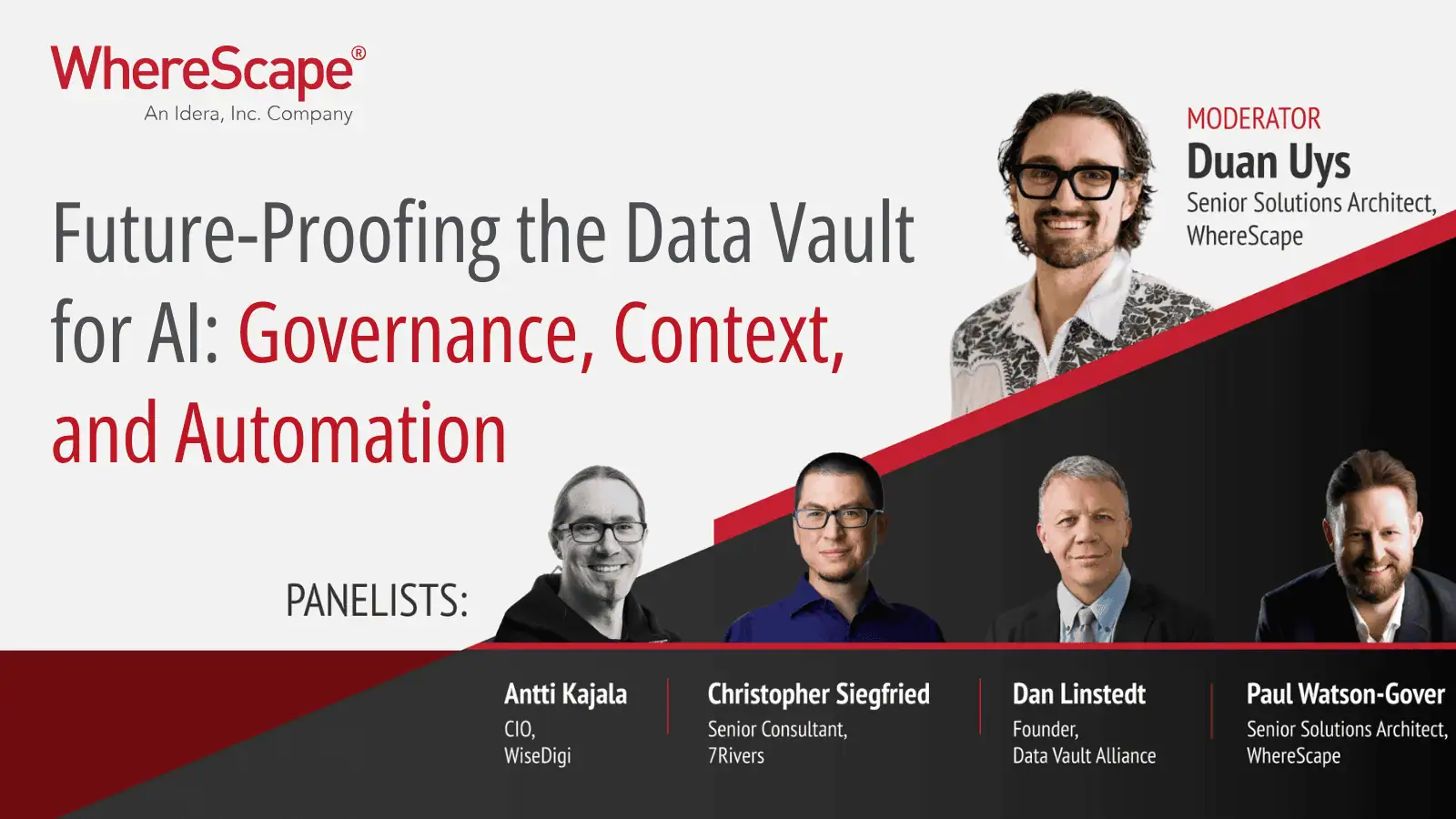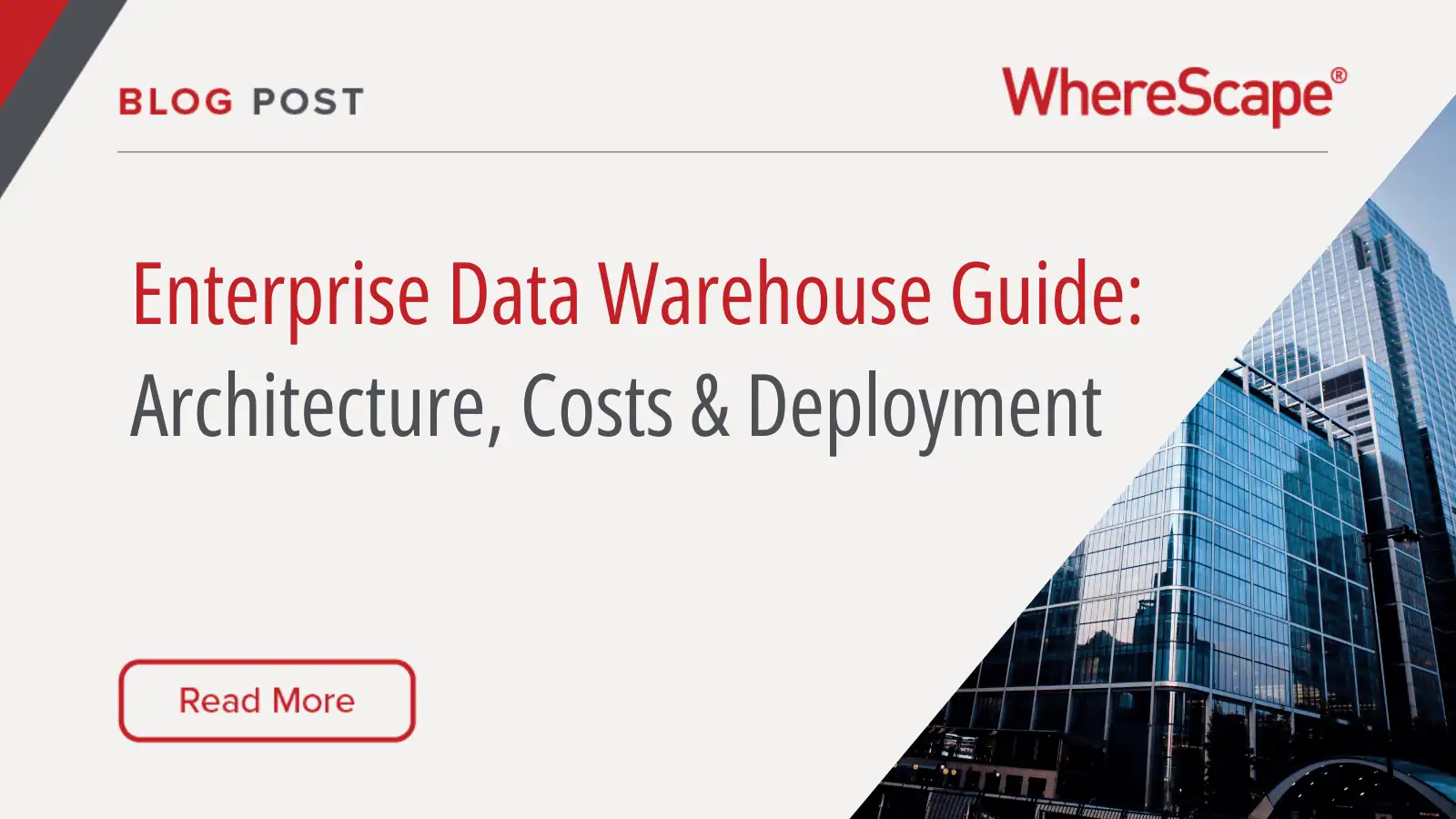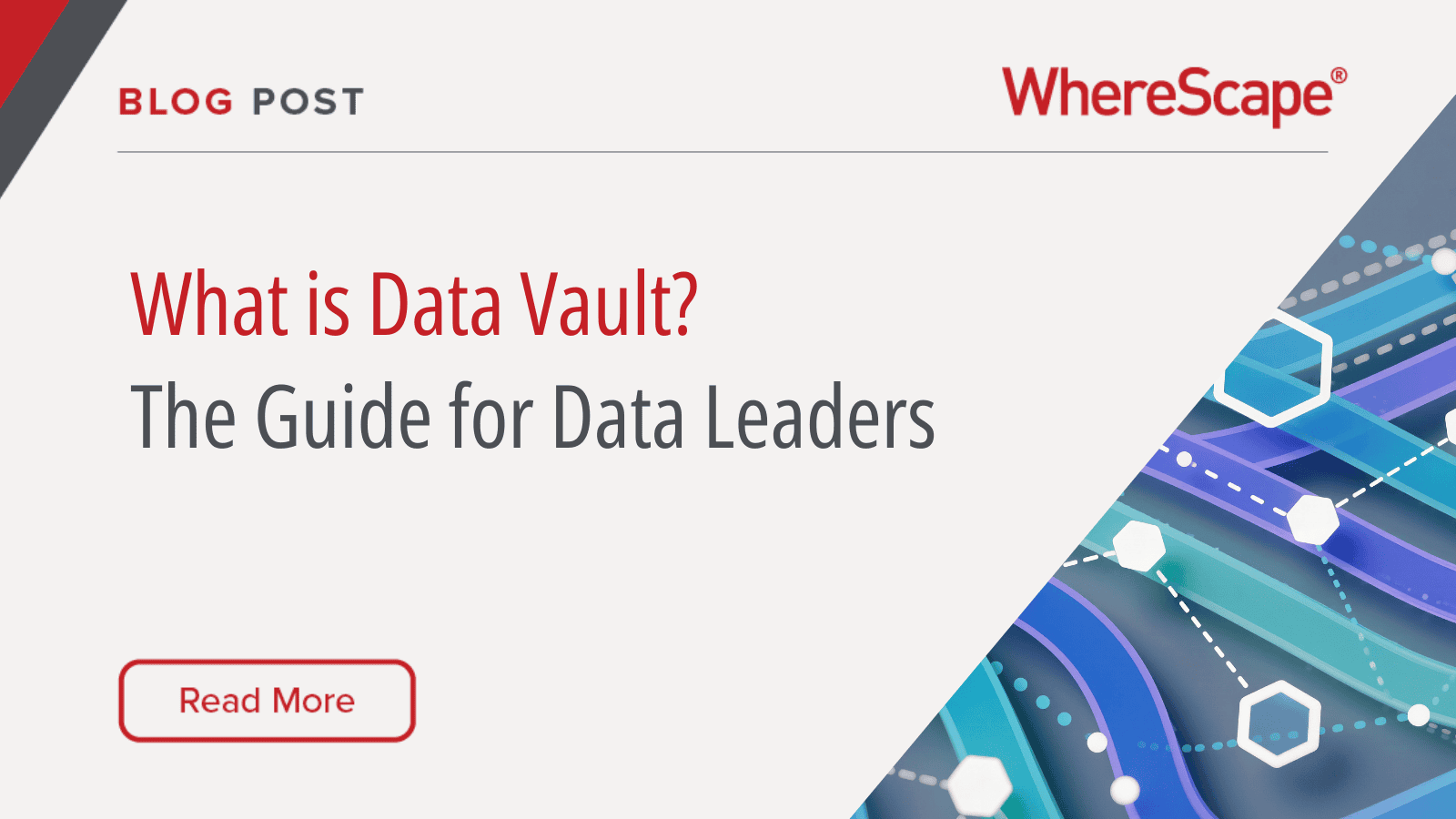The demand for robust data management systems has never been higher, and Databricks has quickly become a favored choice for cloud-based solutions. Its powerful capabilities make it a top contender for managing large-scale data, but when combined with WhereScape’s automation tools, it creates an even more compelling data management experience. In this blog, we’ll explore the strengths of Databricks and how its integration with WhereScape enhances data management efficiency and effectiveness.
Apache Spark
At the core of Databricks is Apache Spark, an open-source unified analytics engine designed for large-scale data processing. Spark’s high-performance batch and streaming data capabilities make it an ideal foundation for Databricks. It supports multiple programming languages, including SQL, Python, R, and Scala, offering flexibility for data scientists and engineers.
Spark’s seamless integration with big data tools and frameworks enhances Databricks’ utility in diverse data ecosystems, allowing users to leverage existing investments in data infrastructure while benefiting from Spark’s advanced analytics capabilities.
Medallion Architecture
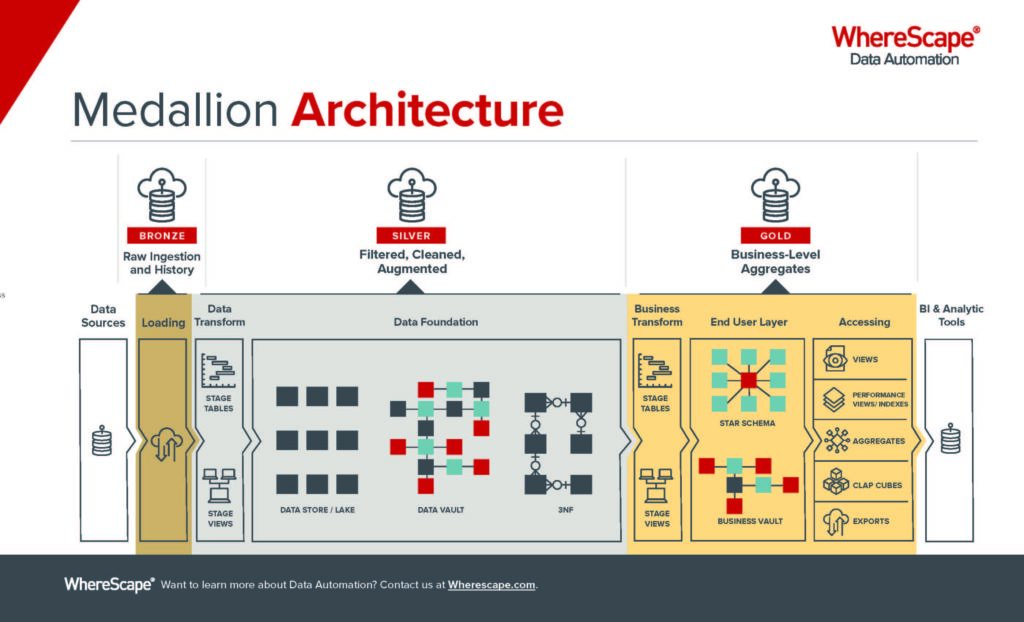
Databricks stands out with its powerful features that streamline data processing and analytics. One of the most notable features is its unique Medallion Architecture, which organizes data into three layers: Bronze, Silver, and Gold.
- The Bronze layer serves as the foundation, capturing raw data from various sources while maintaining the source system structures and essential metadata for historical archiving and auditability.
- The Silver layer cleanses, matches, and merges the data to provide an enterprise view of key business entities, supporting self-service analytics, ad-hoc reporting, and advanced analytics with efficient ELT methodologies.
- The Gold layer offers consumption-ready, curated business-level tables optimized for reporting and complex analytics projects, such as customer and product analytics.
This progressive enhancement of data structure and quality through the Medallion Architecture ensures that data flows smoothly and becomes more refined at each stage, making it an ideal setup for comprehensive analytics and reporting.
Delta Lake
Another standout feature of Databricks is Delta Lake, an open-source storage layer that brings reliability to data lakes. Delta Lake provides ACID transactions, which ensure data reliability and consistency, a crucial aspect of any enterprise data solution. It also supports scalable metadata handling, allowing for efficient management of large datasets.
Additionally, Delta Lake’s time travel feature enables users to access and revert to previous versions of data, providing flexibility and security in data management. Efficient data schema enforcement and evolution further enhance its utility, making Delta Lake a robust and reliable solution for managing large-scale data environments.
Delta Live Tables
Delta Live Tables is another innovative feature that simplifies the creation and management of data processing pipelines. This declarative framework enables users to build reliable, maintainable, and testable data pipelines with minimal coding. Delta Live Tables integrates streaming tables and materialized views, allowing for incrementally refreshed and updated data streams.
This feature enhances the robustness of data pipelines, ensuring that they can handle continuous data updates and changes without significant manual intervention, thereby streamlining the overall data processing workflow.
Collaborative Notebooks
Collaborative Notebooks in Databricks provide a significant productivity boost for data teams. These notebooks support multiple programming languages and offer real-time collaboration, enabling teams to work together seamlessly on data projects. The fully managed and highly automated developer experience simplifies building data and AI projects, making it easier for data practitioners to start quickly, develop with context-aware tools, and easily share results. This collaborative environment fosters innovation and efficiency, allowing teams to leverage the full power of Databricks in a cohesive and integrated manner.
Benefits of Databricks and WhereScape Integration
WhereScape’s automation tools complement these features by simplifying and accelerating the development process within Databricks. WhereScape offers customizable, best-practice templates that reduce the need for manual coding and minimize errors. Its metadata-driven approach automates data movement, enhancing speed without directly touching the data. Every action taken with WhereScape is fully documented, providing transparency and alleviating the need for manual documentation efforts.
The integration of WhereScape with Databricks accelerates development by automating repetitive tasks, enabling faster design, development, and deployment of data solutions. This reduces complexity by providing a unified interface for managing data pipelines, cutting down on the manual workload associated with handling multiple tools and scripts. The combined platforms also support Agile development methodologies, allowing teams to quickly iterate and adapt data solutions to changing business requirements, ensuring that the data warehouse evolves in line with business needs.
Furthermore, WhereScape is uniquely designed to work with Databrick’s Medallion Architecture by loading raw data in the Bronze layer, providing a foundation with clean, filtered, semi-curated data. WhereScape then uses its automation capabilities at the Silver layer to build the data warehouse.
Finally, WhereScape utilizes the Kimball-Style star schema method to present fully curated analytics and business intelligence to end-users at the Gold layer. WhereScape is more efficient at loading raw data at the Bronze layer compared to our competitors. Additionally, most of our competitors’ tools stop at the Silver layer, unable to provide robust functionality for all three layers of the Medallion Architecture.
Harness the Power of Databricks and WhereScape
The integration of WhereScape’s automation tools with the unique features of Databricks provides a powerful solution for modern data challenges. This partnership accelerates development, reduces errors, and ensures scalability, flexibility, and cost-efficiency.
Contact us to learn more about the powerful partnership between Databricks and WhereScape.

